Vegan Globetrotter is supported by our audience. When you purchase through one of our links, we may earn a small affiliate commission. As an Amazon Associate I earn from qualifying purchases. Your cost is not affected.
==================
Hey there, fellow food enthusiasts! Today, let’s embark on a culinary journey as we dive into the fascinating realm of non reactive pans. These kitchen essentials play a silent yet crucial role in ensuring the pure flavors of your ingredients shine through without any unwanted metallic aftertaste. Join me as we unravel the secrets behind these kitchen gems and discover how they elevate your cooking experience to a whole new level. Get ready for a cooking adventure with the spotlight on the ingredients; the pans are the unsung heroes of flavor preservation. Let’s explore the world of non reactive pans together!
What Is a Non Reactive Pan?

Photo by: The Pan Handler
Alright, let’s break it down! Non reactive pans, the unsung heroes of your kitchen, are cookware champs that play it cool with acidic foods. Think tomatoes, citrus fruits, and wine—they’re the nonreactive pan’s playground. Why? Because these pans are made with nonreactive materials, saving you from that nasty metallic taste.
Nonreactive cookware prevents chemical reactions between the materials and acidic foods. No worries about your pan leaching metal into your culinary creations or messing with the flavor and color. It’s like a culinary force field against unwanted taste surprises.
Understanding the Difference Between Reactive and Nonreactive Pans
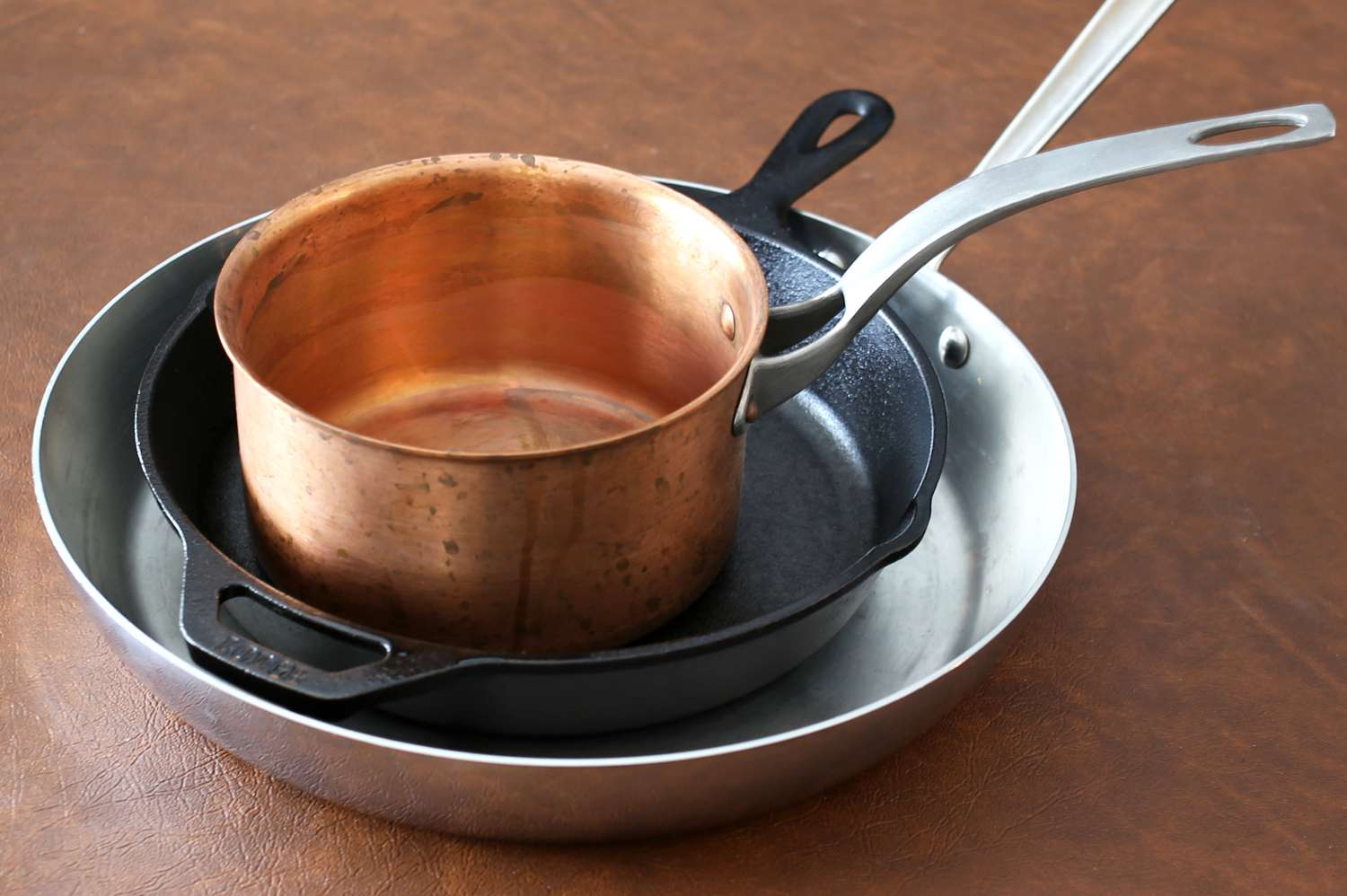
Photo by: The Spruce Eats
Alright, let’s talk about the nitty-gritty differences between reactive and non reactive pans:
Reactive Pans
- Material Reaction: Reactive pans are the metal heroes—usually made of aluminum, copper, or cast iron. The catch? They can throw a chemical party with acidic or alkaline foods, messing with the taste and color of your dish.
- Flavor Impact: Cooking with these metal maestros, especially with tomatoes, vinegar, or citrus, might lead to a metallic flavor sneakily hopping into your meal. Not cool, right? It could mess with your recipe’s flavor vibe.
- Maintenance Challenges: Reactive pans can be a hassle. It is Because of the rust, corrosion, and discoloration.
- Versatility Considerations: While they’re rockstars for searing meat, reactive pans might not be the A-listers for recipes loaded with acidic ingredients. Keep that in mind for your cooking playlist.
Nonreactive Pans
- Material Selection: Now, let’s talk about the chill squad—nonreactive pans made from stainless steel, glass, or ceramic. Think of these materials as bodyguards, shielding your ingredients from any chemical clashes.
- Flavor Preservation: Using nonreactive pans is like a flavor sanctuary. No unwanted metallic tastes are crashing your culinary party. Perfect for delicate dishes or those with intricate flavor profiles.
- Easy Maintenance: Nonreactive pans are the low-maintenance pals. They’re less likely to throw a tantrum with corrosion or staining.
- Acidic Food Compatibility: Planning a tangy tomato sauce or a citrus-infused masterpiece? Non reactive pans are your culinary comrades. They will keep your food’s vibe, keeping everything pure and flavorful.
- Versatility: These pans are the multitasking champs. You can throw any cooking technique at them, and they’ll handle it like a boss. Perfect for recipes where the real flavors of your ingredients need to shine.
Benefits of Using Nonreactive Pans
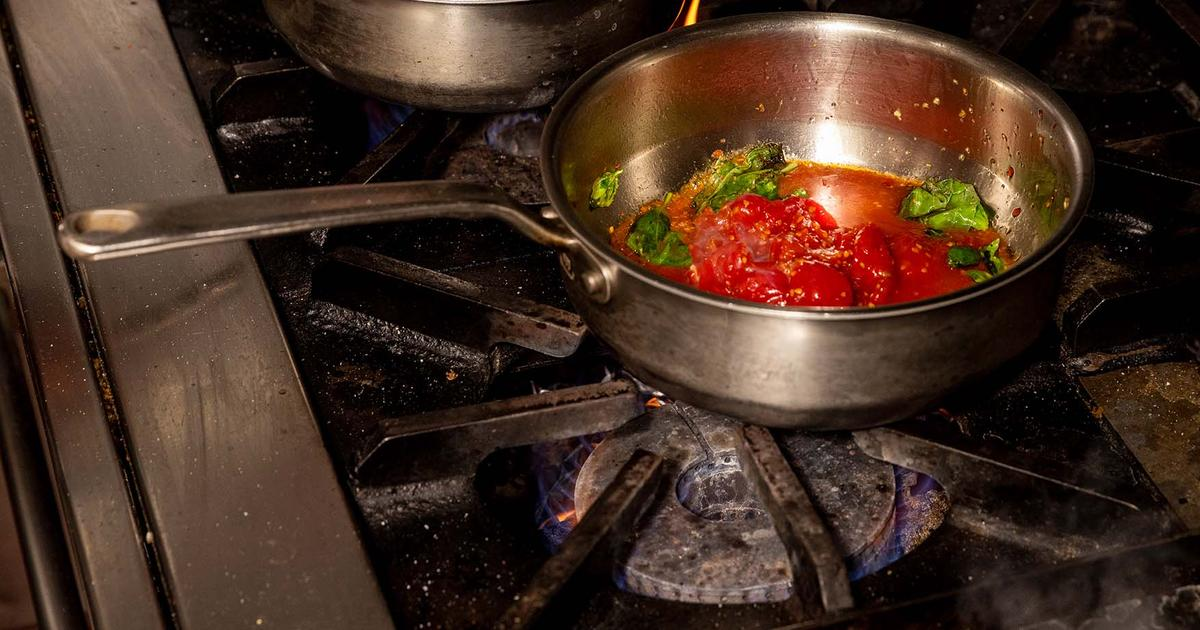
Photo by: Made In
Let’s dive into the awesomeness of using a non reactive pans.
Keeps Flavors and Nutrients Intact
No one likes it when their food starts a chemical reaction with the pot or pan. Non reactive pans keeps your flavors and nutrients in check so your meals taste as awesome as they should.
Easy Peasy Cleanup
Have you ever had a battle with stuck-on food? Nonreactive cookware makes cleanup a breeze. No more scrubbing like your life depends on it!
Acidic Food Friendly
If you’re into tangy tomato sauces or zesty citrus dishes, nonreactive cookware is your buddy. It’s not bothered by acidic foods, unlike some other cookware that might start corroding.
Built to Last
Nonreactive cookware is like the superhero of the kitchen—it’s built to last! With a little love and care, it can hang in there for years, helping you whip up deliciousness without breaking a sweat.
Healthier Cooking Vibes
Are you worried about mysterious chemicals sneaking into your meals? Fret not! Nonreactive cookware, such as your pan, won’t leach any funky stuff into your food, making it a healthier choice for culinary adventures.
What Materials Are Nonreactive Pans Made Of?
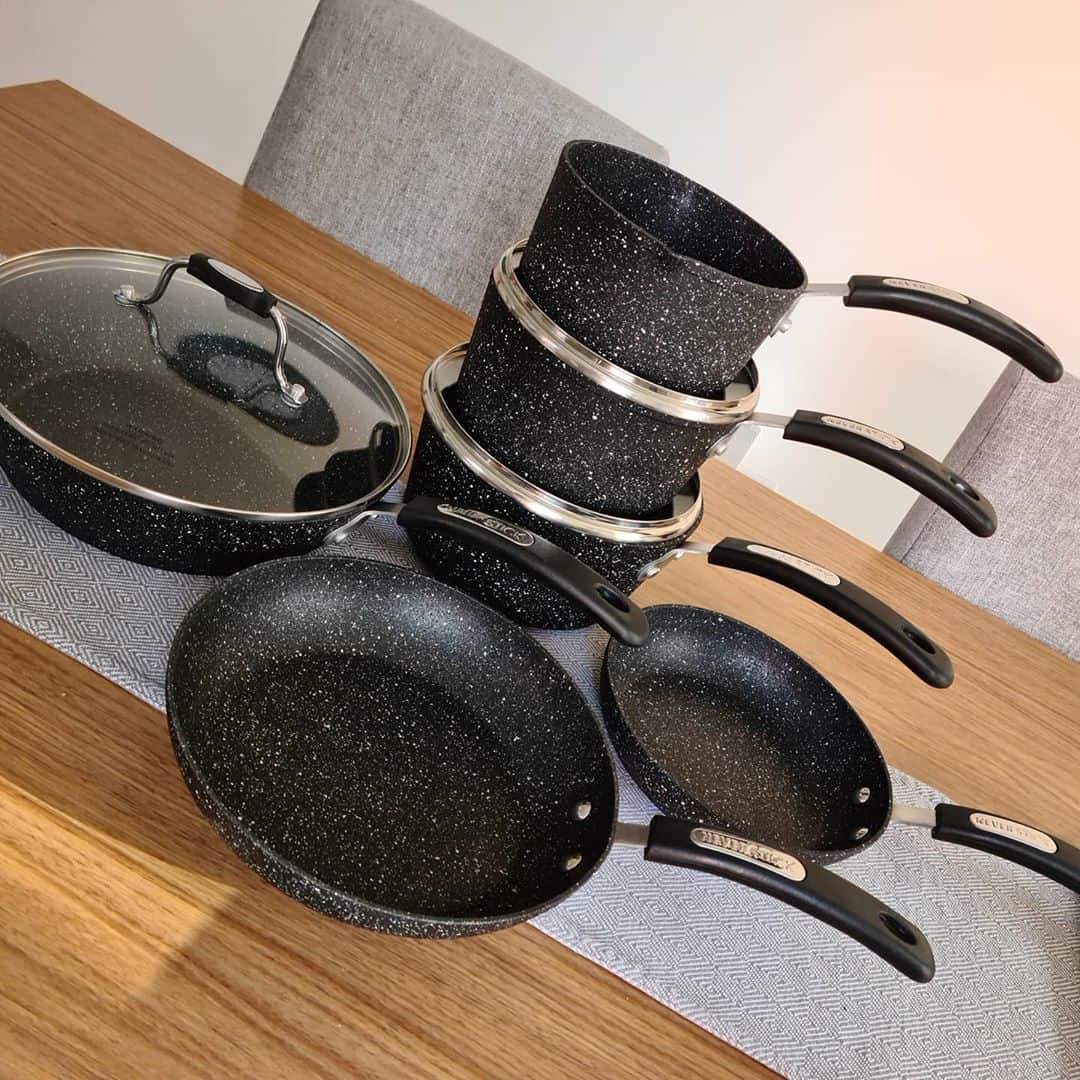
Photo by: The Pan Handler
Non reactive pans, your kitchen superheroes. No fuss with acidic ingredients. Made from materials that play nice, ensuring a seamless cooking experience. No unwanted chemical drama.
Now, let’s meet the heavy hitters in the nonreactive game:
Stainless Steel
Meet the crowd-favorite MVP – durable, affordable, and a breeze to maintain. It’s the go-to for even heat distribution, perfect for simmering your tangy tomato sauce without any metallic surprises
Enameled Cast Iron
The enamel coating is a shield, ensuring no drama with your favorite tangy ingredients. Cook up a storm without a worry in the world.
Glass
It will keep your flavors, making it perfect for dishes where you want the pure taste to shine through. Handle it with extra care, and you’re ready.
Ceramic
The nonstick wonder is your ally for cooking with acidic ingredients. It’s nonreactive, perfect for those zesty dishes, and a breeze to clean.
Materials to Avoid When Cooking with Acidic Ingredients
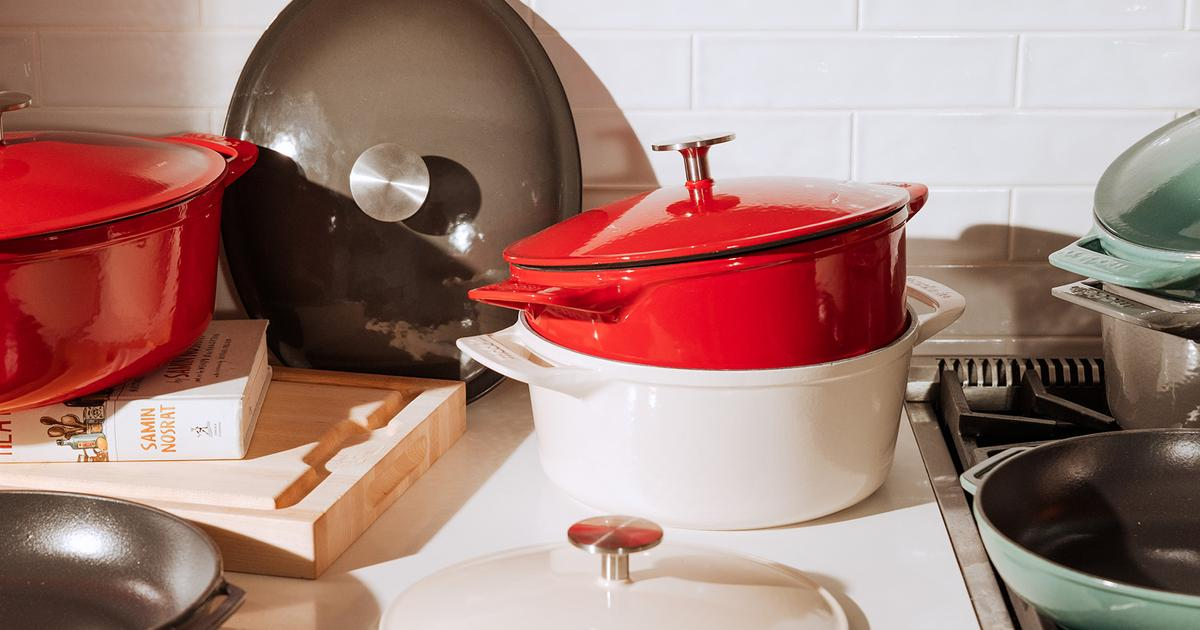
Photo by: Made In
Skip unlined tin, copper, raw aluminum. Unseasoned cast iron? No go. But seasoned ones? They can handle some fruits and acidic goodies.
Invest in good-quality cookware. You don’t need a full kitchen arsenal, but top-notch pots and pans often come with a lifetime guarantee, saving you bucks in the long haul.
Things to Avoid When Using Non Reactive Pans
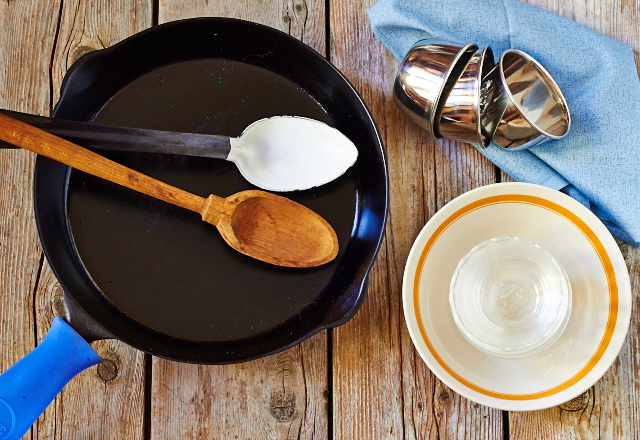
Photo by: The Messy Baker
To keep your non reactive pans going strong and performing at their best, steer clear of the following:
Metal Utensils
Be gentle with your nonreactive buddy, and avoid using metal utensils, which can scratch or damage the cooking surface.
High Heat
Nonreactive pans are pretty versatile, but too much heat can mess with certain nonstick coatings. Follow the heat guidelines from the manufacturer to avoid any damage.
Abrasive Cleaners
Keep your nonreactive cookware in tip-top shape by steering clear of abrasive cleaning pads or harsh cleaning agents that can scratch or erode the surface. Opt for soft sponges or cloths and use mild, non-abrasive detergents instead.
Don’t forget to check out the manufacturer’s instructions and care guidelines for your specific nonreactive cookware. Following these tips ensures you’re giving it the care it needs, helping to extend its life and keep it performing at its best.
Tips for Using Non Reactive Cookware
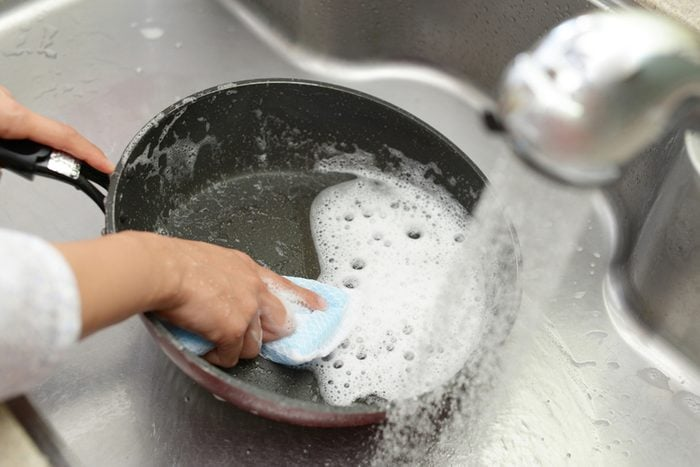
Photo by: Taste of Home
Here are some tips to when you’re done using your non reactive pans.
- Hand wash your nonreactive cookware with warm, soapy water.
- Dry it off right after washing; there is no air-drying drama.
- Store it in a dry spot, away from kitchen chaos.
- Be gentle with wooden or silicone utensils—the cookware’s BFFs.
Keep your nonreactive cookware happy and healthy with these easy tips. Your food stays safe, and your kitchen vibes stay top-notch.
Nonreactive Pans Elevate Your Culinary Creations
We’ve been checking out non reactive pans, and they’re like culinary superheroes. Made from cool stuff like stainless steel, enameled cast iron, glass, and ceramic, these unsung heroes make sure our food tastes amazing without any weird aftertastes.

So, we compared them to reactive pans, and nonreactive ones are the real stars. They’re super versatile, easy to clean, and they keep our flavors on point. Now that we know the scoop on nonreactive cookware, let’s keep the kitchen adventures going strong. Our nonreactive pans are like sidekicks, making sure our flavors are always on fire. Here’s to more tasty discoveries in our cooking journey, all thanks to these awesome and reliable nonreactive pans!
FAQS
Is Nonstick Cookware Nonreactive?
Let’s talk nonstick cookware—it’s like the kitchen superhero, and here’s why: it’s nonreactive. That means it won’t throw a fit when it hangs out with acidic foods like tomatoes, citrus fruits, or vinegar. And why does that matter? Well, with reactive cookware, you might have a metallic taste or funky discoloration in your food because of those metal ions playing matchmaker.
Now, nonstick cookware has this cool coating, usually made of Teflon or something similar, that stops food from staging a sticky protest on the surface. The best part? Teflon is nonreactive, too, making it the perfect sidekick for your acidic culinary adventures.
But, and there’s always a but, treat your nonstick cookware like the delicate genius it is. It can get scratched or damaged. If that happens, the reactive metal underneath might sneak into your food, and we don’t want that. So, be gentle, avoid the metal utensils, and your nonstick cookware will keep rocking the kitchen scene hassle-free.
Can Nonreactive Pans Be Used With High Heat?
Think of your nonreactive pan as a cooking superhero—it can take on different temperatures. But here’s the deal: follow the manufacturer’s rules to keep it in top shape, especially if it’s got a nonstick coating. We want that pan to stay the kitchen champion it is, so let’s stick to the guidelines for some cooking magic!
🌱 Explore More With Us! 🍉🌽
Discover the world of veganism and embrace the vegan lifestyle! 🔪
👉 Engaging Content: Follow us on Facebook, Instagram, Pinterest, and Twitter for exciting posts about fruits, veggies, and the vibrant vegan world.
👉 Product Reviews: Check out honest reviews on plant-based products.
👉 Connect with a Community: Join our passionate community of vegan enthusiasts, share your experiences storing fresh herbs, and learn from like-minded individuals who love cooking with fruits and veggies!
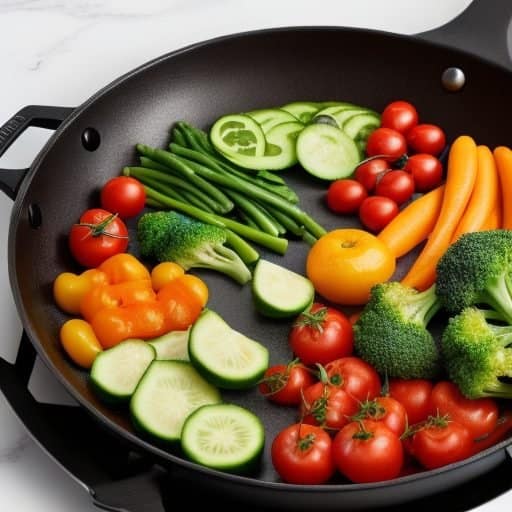
📌 Find Us on Social Media
🔹 Facebook: VeganGlobetrotter Join us on our Facebook page, VeganGlobetrotter, where we share mouthwatering plant-based recipes and tips to inspire your vegan lifestyle.
🔹 Instagram: _veganglobetrotter Follow us on Instagram at _veganglobetrotter to embark on a visual journey of delectable vegan dishes.
🔹 Pinterest: theveganglobetrotter Dive into the world of plant-based goodness and wellness with our Pinterest account, theveganglobetrotter.
🔹 Twitter: VeganGlobetrot Stay up-to-date with the latest vegan trends, insightful articles, and exciting updates by following us on Twitter at VeganGlobetrot.
🌍 Let’s embark on a vegan journey and a celebration of the vibrant world of vegan living! 🌱🌏




Don't miss out
when new recipes and information are added!
Join our newsletter for free recipes,
healthy living inspiration, and special offers
You have Successfully Subscribed!